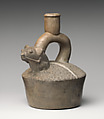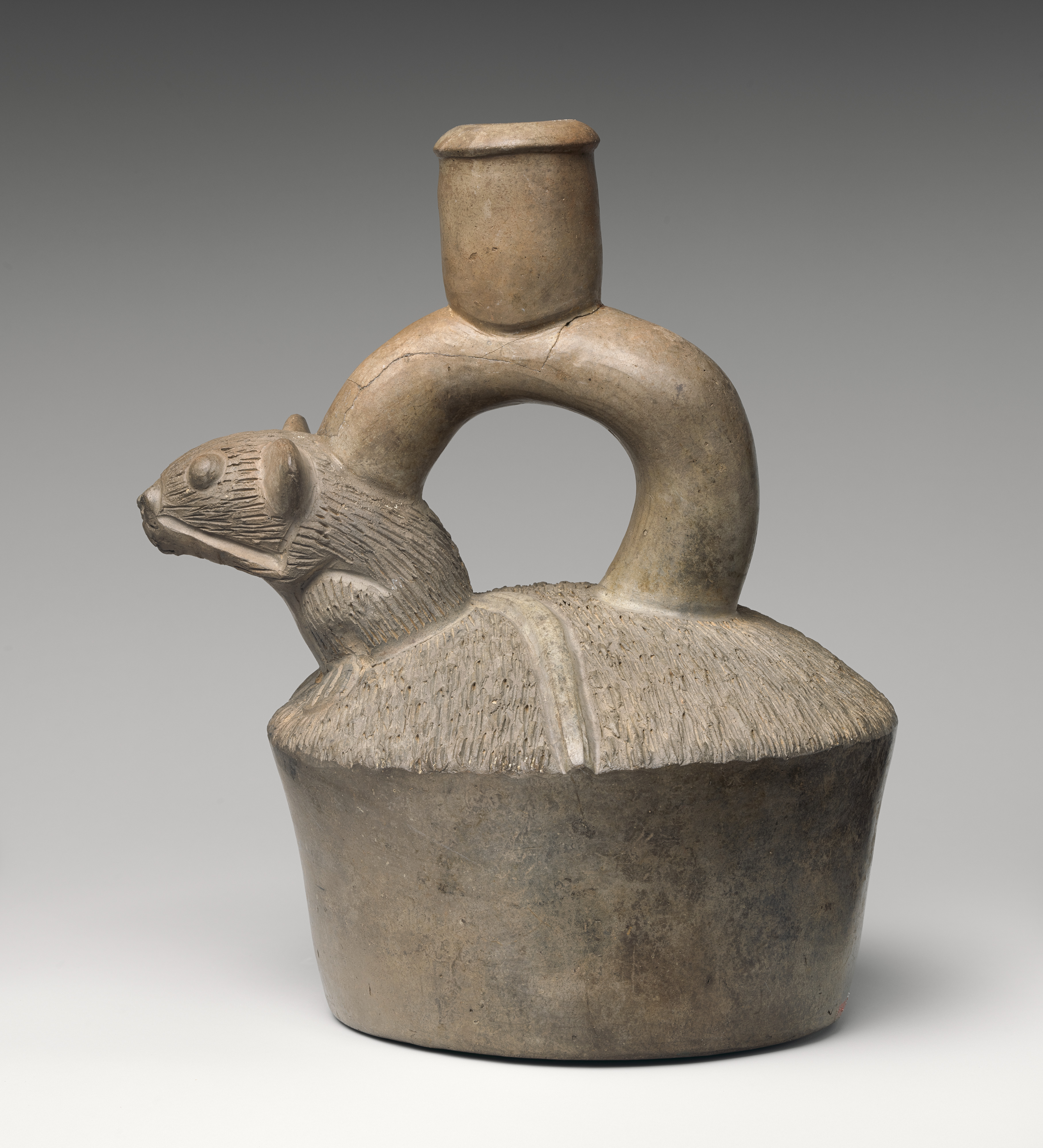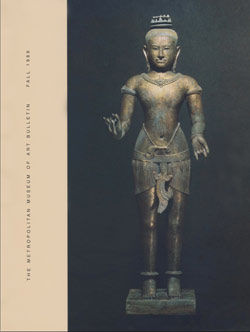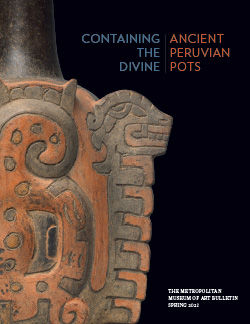Stirrup-spout bottle with mouse
Despite its pervasiveness, the spread of Chavín art throughout much of Peru in the first millennia B.C. did not preclude the expression, proliferation, and production of local and regional art styles in some highland and coastal communities. Nowhere is this more evident than on Peru's northern coast, where a variety of ceramic forms, including Chavín, coexisted. Often considered variants of one another, the coastal styles shared certain similarities with each other, as well as with Chavín, especially in their treatment of surface texture. Through a combination of modeling, incision, burnishing, and combing, these early potters created highly elaborate and masterful products. Stirrup-spout bottles, like the one pictured here, was the preferred form among northern coast potters during this time. Classified as Chongoyape, after the coastal site where this style of pottery was first identified, the ceramic vessel, which depicts a mouse eating, manifests a variety of the surface techniques discussed above. The rodent's fur is represented using a series of short, vertical incisions, while its arms and legs are indicated by broad incised lines. The body and spout of the vessel are highly burnished, providing a stark contrast to the coarse and punctuated surface seen on the vessel neck.
Due to rights restrictions, this image cannot be enlarged, viewed at full screen, or downloaded.
This artwork is meant to be viewed from right to left. Scroll left to view more.





